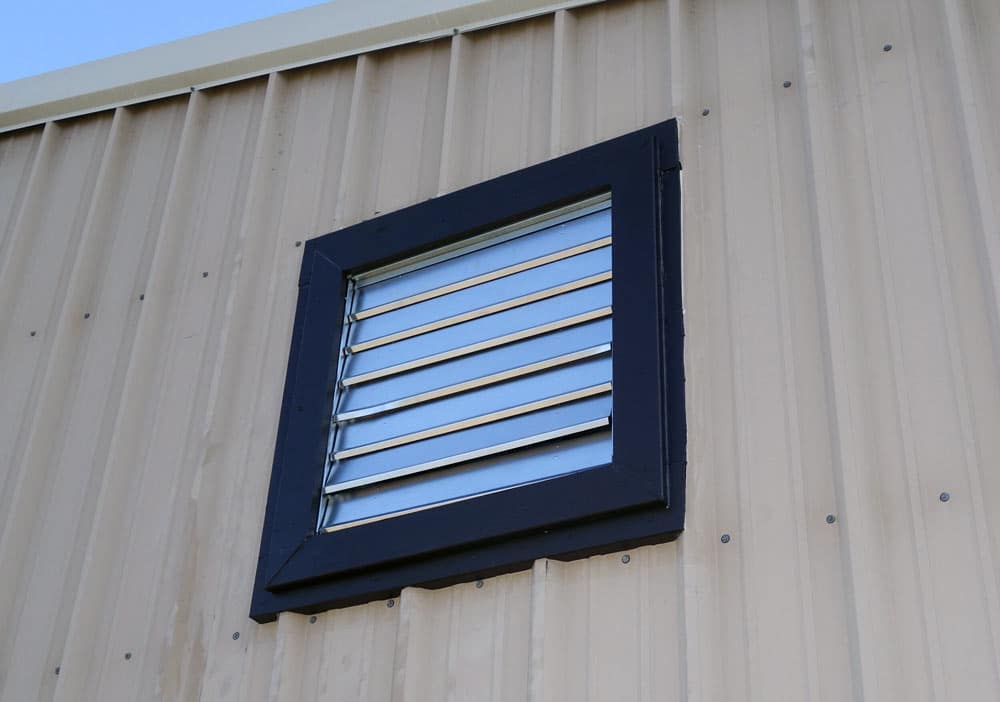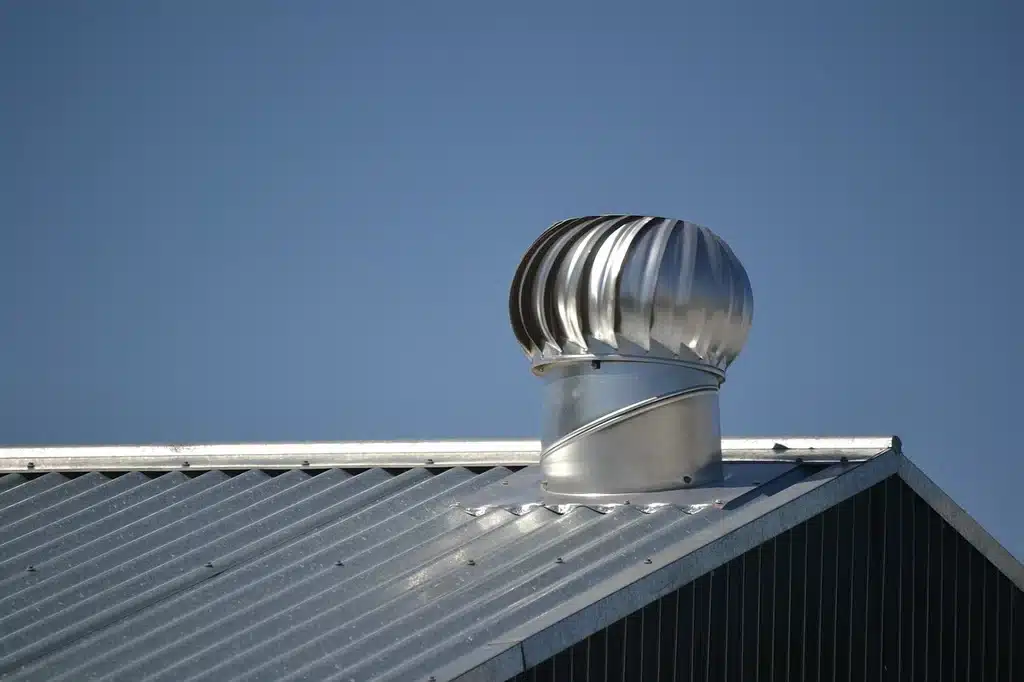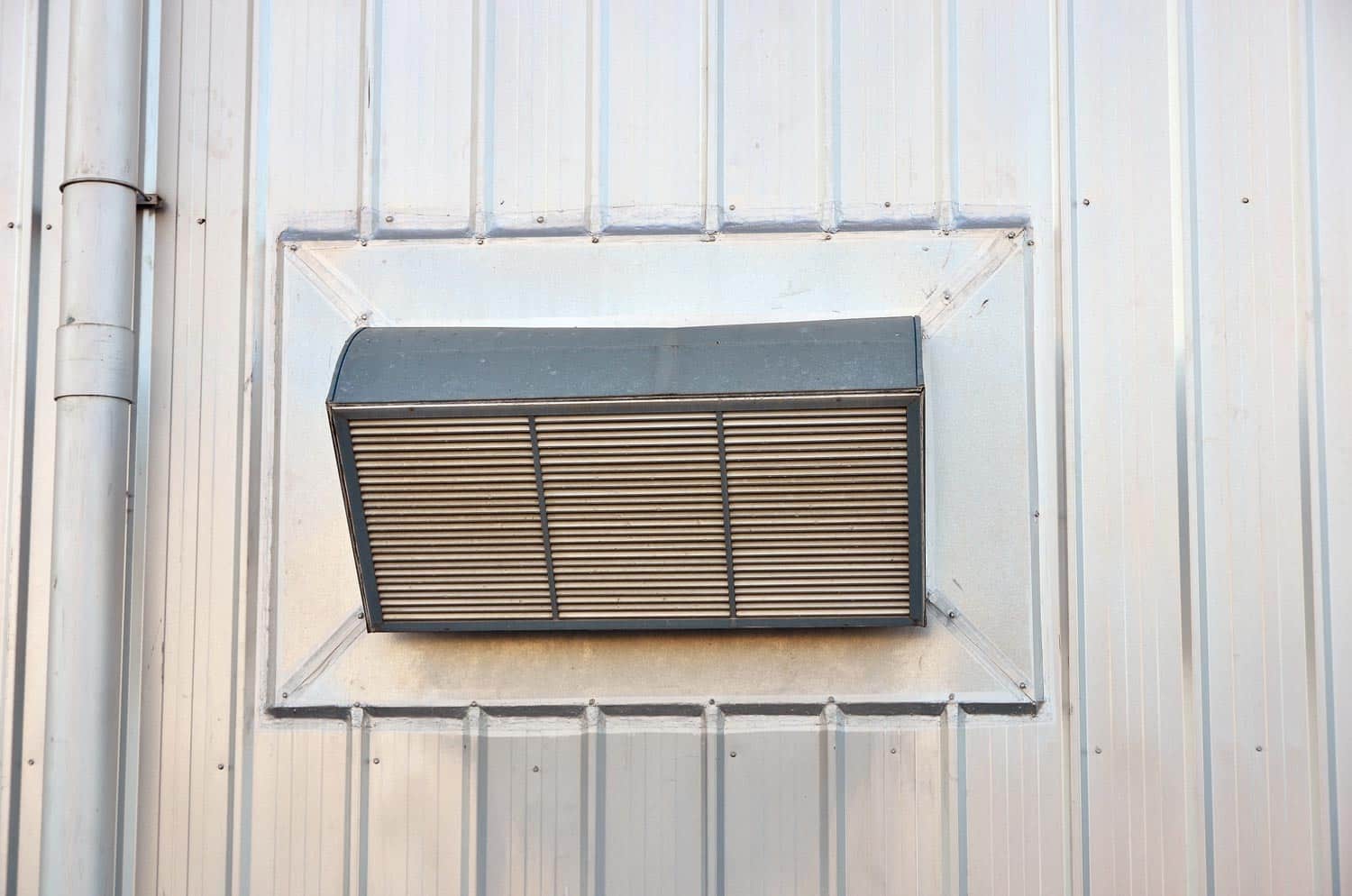Ventilation isn’t just about comfort—it protects the building itself and keeps the space usable. It keeps moisture in check, helps cut down on energy bills, and supports a healthier environment for anyone inside.
COMPARE PRICES & SAVE
Getting the ventilation right in a metal building can make a huge difference for air quality, comfort, and safety.
Effective ventilation lets hot, stale air out and brings in fresh, cooler air, which helps even out temperatures and keeps moisture from becoming a problem. That’s huge for protecting both whatever you’re storing and anyone working inside.
Picking the right ventilation system depends on things like the size and shape of your building, plus any unique needs you might have.
There are plenty of options—wall vents, ridge vents, exhaust fans—all with their own perks. Mixing and matching these can help you get the best results, whether it’s a small shed or a big warehouse you’re dealing with.
3 Types of Ventilation Systems for Metal Buildings

There are a handful of ways to ventilate steel buildings, all aimed at controlling air quality, moisture, and temperature. The best pick depends on your building’s size, the climate, and what you use the space for.
Natural Ventilation Solutions
Natural ventilation just uses the wind and temperature differences—no motors needed. Ridge vents, wall louvers, even open windows all count. Ridge vents go along the roof’s peak and let hot air drift out, which is especially helpful if you’ve got high ceilings.
Louvers on side walls pull in fresh air, and when you combine them with ridge vents, you get cross-ventilation. It’s a cheap, low-maintenance approach, especially in milder climates or big open spaces where airflow isn’t blocked by lots of walls.
In places where humidity or temperature swings are an issue, natural airflow can help with condensation. Just remember to check vents regularly so they don’t get clogged up.
Mechanical Ventilation Systems
Mechanical systems use powered gear—think exhaust fans and turbine vents. Exhaust fans pull out stale or humid air, while intake fans push fresh air in.
You can set these up with thermostats or humidity sensors to run only when needed, which saves energy. It’s important to size and place fans right, so you don’t just ventilate near the doors and leave the rest stuffy. Exhaust fans are especially handy when it’s hot or muggy.
Mechanical setups give you more control than natural ones, and they’re essential in spots where heat, fumes, or moisture are a bigger concern—like workshops or warehouses.
Hybrid Ventilation Approaches
Hybrid systems mix natural and mechanical methods. Maybe you mostly rely on ridge and wall vents, but add exhaust fans for those times when the breeze just isn’t cutting it.
This setup gives you flexibility. On nice days, you stick with natural ventilation and save energy; when it’s extreme out or you need more airflow, you flip on the fans. It’s a good way to control humidity, temperature, and air quality without running up the electric bill.
Hybrid systems are also easier to adapt as your needs or the weather changes. Lots of owners end up with some sort of mix to get the best of both worlds.
Design Considerations

Getting ventilation right is about more than just adding vents—it takes smart design, good airflow, and the right placement and sizing. Thoughtful planning can help dodge moisture issues, boost comfort, and make the building last longer.
Proper Airflow and Circulation
You really want air to keep moving, not just sit in one spot. That means planning for clear pathways and avoiding big obstacles like walls or stacks of stuff that block the flow.
Fans, ridge vents, and louvers all help move air around. Ridge vents along the roof’s top let out warm air, and intake vents low on the walls bring in cooler air. It’s important that exhaust and intake are balanced—otherwise, you get uneven airflow.
Checking vents for dust or blockages now and then helps too. If you’re storing big equipment, make sure it’s not blocking the vents.
Building Orientation and Layout
How you position the building can make a difference. Lining things up with the prevailing winds helps natural ventilation do its thing. Ridge vents that run parallel to the wind direction work better, honestly.
Open floor plans help air move more freely than a bunch of small, closed-off rooms. If you can, avoid too many tight spaces, and maybe use interior vents or open gaps to help air travel between rooms.
Tall ceilings or sloped roofs also help with airflow. Basically, working with nature instead of against it saves you money and hassle in the long run.
Vent Placement and Sizing
Where you put vents and how big they are really matters. You don’t want dead spots with no airflow. A common rule is at least 1 square foot of vent area for every 150 square feet of attic or roof space, but double-check your local codes.
If vents are too small or not balanced, you risk moisture problems—think mold or rust. Intake and exhaust should be pretty even to keep things moving smoothly.
Mixing up vent types—roof, wall, gable—lets you target hot spots or places where air tends to get stuck.
Ventilation Components & Accessories

There are a few key parts that make up any good metal building ventilation system. Each one has a job—moving air, keeping out moisture, or making the space more comfortable for everyone (and everything) inside.
Ridge Vents
Ridge vents run right along the peak of the roof, letting warm, stale air escape from up high. They work on the principle that hot air rises, so they’re pretty efficient at getting rid of heat.
They’re usually built to keep out rain, birds, and rodents with mesh or screens. Metal building ridge vents also help cut down on condensation, which protects your roof structure. Most are made from tough materials like galvanized steel, so they last and look good with the rest of the roof.
For best results, install them continuously along the ridge and pair them with intake vents for balanced airflow.
Louvered Vents
Louvered vents usually go in the walls. Their angled slats let air move in or out, but keep rain and debris out. Some have screens for extra pest protection.
Setting up louvered vents right can help with cross-ventilation, cutting down on hot spots and controlling humidity. They come in all sorts of sizes and shapes, so you can find something that fits your space.
Most are made from heavy-gauge steel or aluminum and don’t need much upkeep. Just check now and then to make sure nothing’s blocking the slats or screens.
Exhaust Fans
Exhaust fans use power to actively move air out—super helpful when natural airflow isn’t enough, like in busy workshops or industrial spaces.
They come in different sizes and strengths, and can be wall- or roof-mounted. Some even have controls to turn on automatically when it gets hot, or work with thermostats and timers.
Exhaust fans for metal buildings move a lot of air fast, helping protect equipment from overheating and making it a better place to work.
Intake Vents
Intake vents let in the fresh air that replaces what’s pushed out by ridge or exhaust vents. If you skip these, you’ll end up with poor airflow and stuffy conditions.
Common types are soffit and wall vents, usually placed low on the walls or at the roof’s edge. You need enough intake vents to balance what’s leaving through the higher vents.
To keep out rain or critters, most intake vents use mesh, louvers, or slats. Spacing them out evenly helps fresh air reach every corner. Sizing and placement are important for regulating temperature and preventing condensation inside.
Frequently Asked Questions
As you can tell, ventilating a metal building is all about balancing passive and active systems, choosing the right vents, and sizing things properly. Keeping condensation in check and picking the right products makes a big difference for both air quality and the building’s lifespan.
What are effective ventilation systems for metal buildings?
Some of the best options are ridge vents, wall louvers, and exhaust fans. These help kick out hot, stale air and bring in the fresh stuff. Usually, a mix of passive (like ridge vents) and powered (like fans) solutions gets you the most reliable airflow.
What are some innovative ideas for ventilating metal buildings?
Solar-powered fans are catching on—less electricity, same results. Automatic louvers that open or close as the temperature changes are popular, too. And if you like gadgets, monitoring systems that track humidity and air quality can automate a lot of the process.
Which wall vents are best suited for metal buildings?
Fixed louvers and adjustable intake vents are a solid pick for wall ventilation. They let air in but keep rain and critters out. If you want something sturdy, metal wall vents with weather hoods are a good bet.
How do you determine the appropriate size for an exhaust fan in a metal building?
You’ll need to know your building’s cubic footage and figure out how many air changes per hour you want. Fan capacity charts are helpful here. When in doubt, talk to suppliers or check out ventilation guidelines from steel building experts.
What considerations are important when installing ridge vents in metal structures?
Make sure ridge vents run the right length for your building and are sealed up tight to prevent leaks. They should sit at the highest point of the roof for the best airflow. Also, double-check that they fit your roof’s shape and slope—it matters more than you’d think.
How can you prevent condensation in a metal building?
Insulation and vapor barriers go a long way toward keeping moist air away from those cold metal surfaces. You might want to take a look at ventilation and insulation options—steady airflow makes a difference, honestly. Sometimes just keeping the temperature from swinging wildly inside can help manage moisture, though it’s not always a perfect fix.

